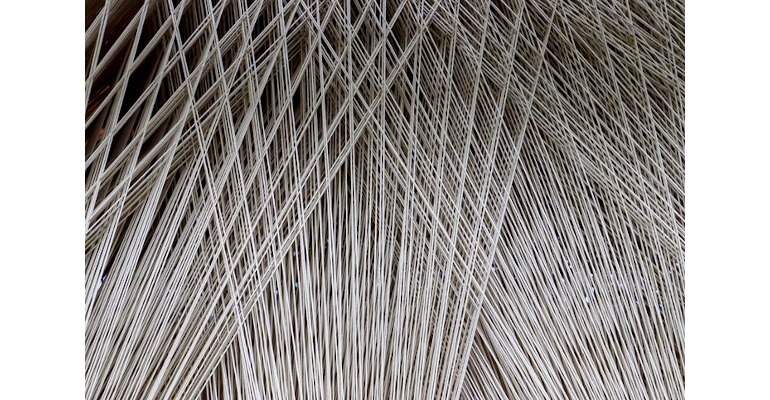Using Common Methods to Produce Inexpensive Smart Textiles With Sensors
Researchers have developed a way to fabricate fabrics with interwoven sensors, LEDs, and other components on industrial looms.
June 5, 2023

Researchers have found a way to develop smart textiles with integrated LEDs, sensors, and other electronic and connected components on similar machinery that's used to make every-day clothing, they said.
The researchers, an international team led by the University of Cambridge, have demonstrated that they can leverage the automated processes used now on industrial looms to create conventional clothing to fabricate smart textiles without limit to their size or shape. This work can significantly drive down the cost of smart textiles as well as make them more generally accessible, as the complexity of manufacturing them has severely limited their production and use, they said.
The research builds upon former work that the team unveiled last year to develop a smart display made of fibers coated with materials that allow for stretching, making them compatible with conventional weaving processes.
The latest achievement in this work is to fabricate multiple types of fiber devices—including energy-storage devices, LEDs, and transistors—and then mix them with conventional fibers, either synthetic or natural, in an automated weaving process. They then interconnected these devices using electrically conductive adhesive and an automated laser welding method, they said.
Indeed, before this method was developed, fabricating them required specialized microelectronics facilities and billions of dollars of investment, noted Sanghyo Lee from Cambridge’s Department of Engineering, who worked on the research. “In addition, manufacturing smart textiles in this way is highly limited, since everything has to be made on the same rigid wafers used to make integrated circuits, so the maximum size we can get is about 30 centimeters in diameter," he said.
Smart Textiles That Are Faster, Cheaper, and Stronger
The complexity of manufacturing isn't the only thing that has limited the use of smart textiles, noted another of the researchers. Their "lack of practicality" also has made them a hard sell, said Luigi Occhipinti, co-leader of the research from Cambridge's Department of Engineering. “You think of the sort of bending, stretching and folding that normal fabrics have to withstand, and it's been a challenge to incorporate that same durability into smart textiles," he explained.
To ensure that the resulting textiles were more durable than ones produced before, the researchers optimized processes to minimize damage to the electronic components, making them able to withstand the stretching that happens when they are worked on an industrial loom. They achieved this by investigating and considering the mechanical force and thermal energy used in the process so that during fabrication, they could encapsulate both weaving and laser-based interconnection, respectively, the researchers said.
The research team worked with textile manufacturers to produce test swatches of smart textiles with dimensions of about 50 by 50 centimeters, they said. However, these sizes can be scaled up and produced in large volumes using the same process, the researchers said.
“These companies have well-established manufacturing lines with high-throughput fiber extruders and large weaving machines that can weave a meter square of textiles automatically,” Lee explained. “So when we introduce the smart fibers to the process, the result is basically an electronic system that is manufactured exactly the same way other textiles are manufactured.”
Researchers published a paper on their work in the journal, Science Advances.
In the future, large flexible displays and monitors could even be fabricated on the industrial looms, making them far cheaper to produce than the process used in specialized manufacturing facilities, where they are produced today, the researchers said. However, for this to become standardized and feasible over the long term, researchers must further optimize the process, which they plan to do, they said.
About the Author(s)
You May Also Like
.jpg?width=300&auto=webp&quality=80&disable=upscale)


